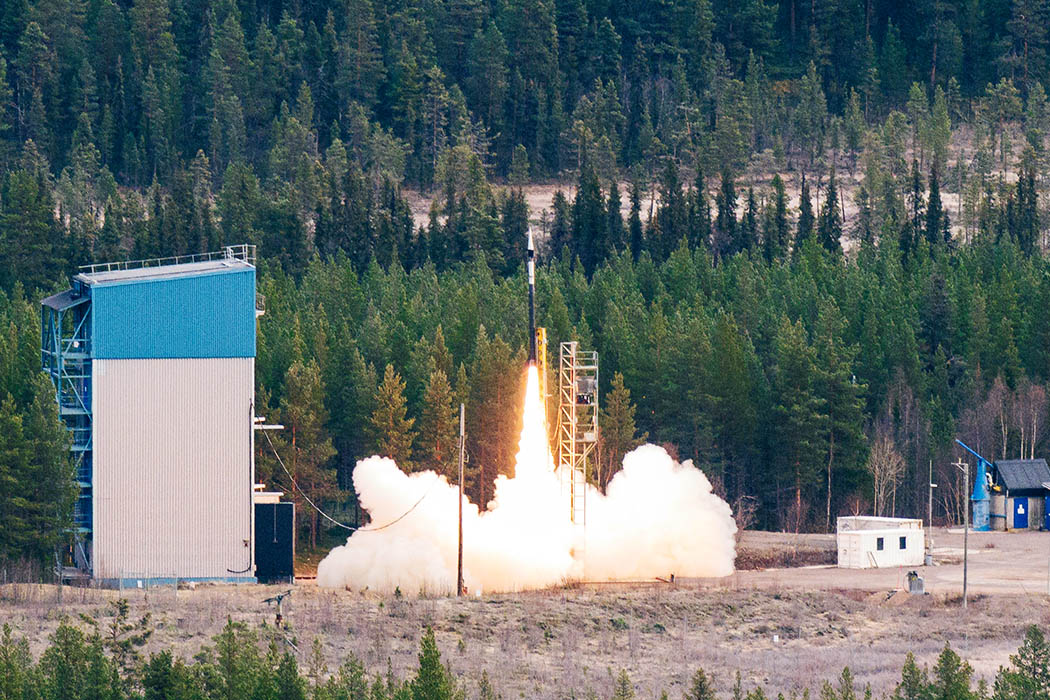The HIFLIER campaign is a hypersonic research mission executed by Air Force Research Laboratory (AFRL), DLR MORABA, DLR Institute of Structures and Design and SSC. AFRL and DLR provided the experiments onboard and DLR MORABA provides the rocket motor system as well as attitude control, despin and separation systems.
The AFRL primary experiment aims to measure the effects of aerodynamic heating by measuring the instabilities that precipitate the transition of the boundary layer from laminar to turbulent flow on the conical forebody geometry. The boundary layer is the thin layer of air near the vehicle’s surface where the airflow is decelerated by frictional forces which causes high aerodynamic heating and increased drag on the vehicle.
Over 250 sensors consisting of thermocouples, pressure sensors, heat flux sensors, and accelerometers were employed to measure the surface conditions. In addition a custom designed high-speed data acquisition system utilizing high frequency pressure and heat flux sensors was flown.
This system, designed by GoHypersonic Inc, sampled 45 sensors at a rate of 2.5 million samples per second and recorded data onboard at a rate of 1,575 million bits per second. Some onboard data was processed during flight and sent with telemetry as a backup in the event that the payload could not be recovered.
The DLR FINEX experiment tested the application of transpiration cooling technology on fins with sharp leading edges during these hypersonic flight conditions. The fins were manufactured with a new porous carbon/carbon silicon-carbide (C/C-SiC) material by the DLR Institute of Structures and Design.

Moreover, while one fin was cooled with constant coolant mass flow rate, an active control system, designed at the Institute of Space System of the University of Stuttgart, was employed on another fin to efficiently regulate the mass flow rate according to the real time thermal load. Two additional fins were un-cooled to act as a baseline.
– Both experiments were successful and a lot of scientific data was generated, transmitted and stored, says Johannes Göser, project manager of DLR MORABA.
The rocket was successfully accelerated to the desired velocity within the experimental windows. Between the two experiment windows the payload was also tilted by the attitude control system in order to be aligned with the vehicle’s velocity vector during the downleg again. The yoyo despin and the motor separation were perfectly executed
– Overall, the campaign has been very successful. A lot of valuable data was generated by the experiments and the MORABA systems all performed nominal. The campaign operations and countdowns were very smooth and the cooperation with SSC was excellent, says Johannes Göser.

